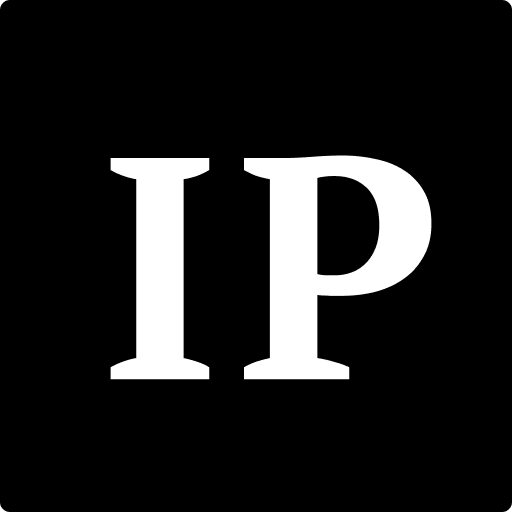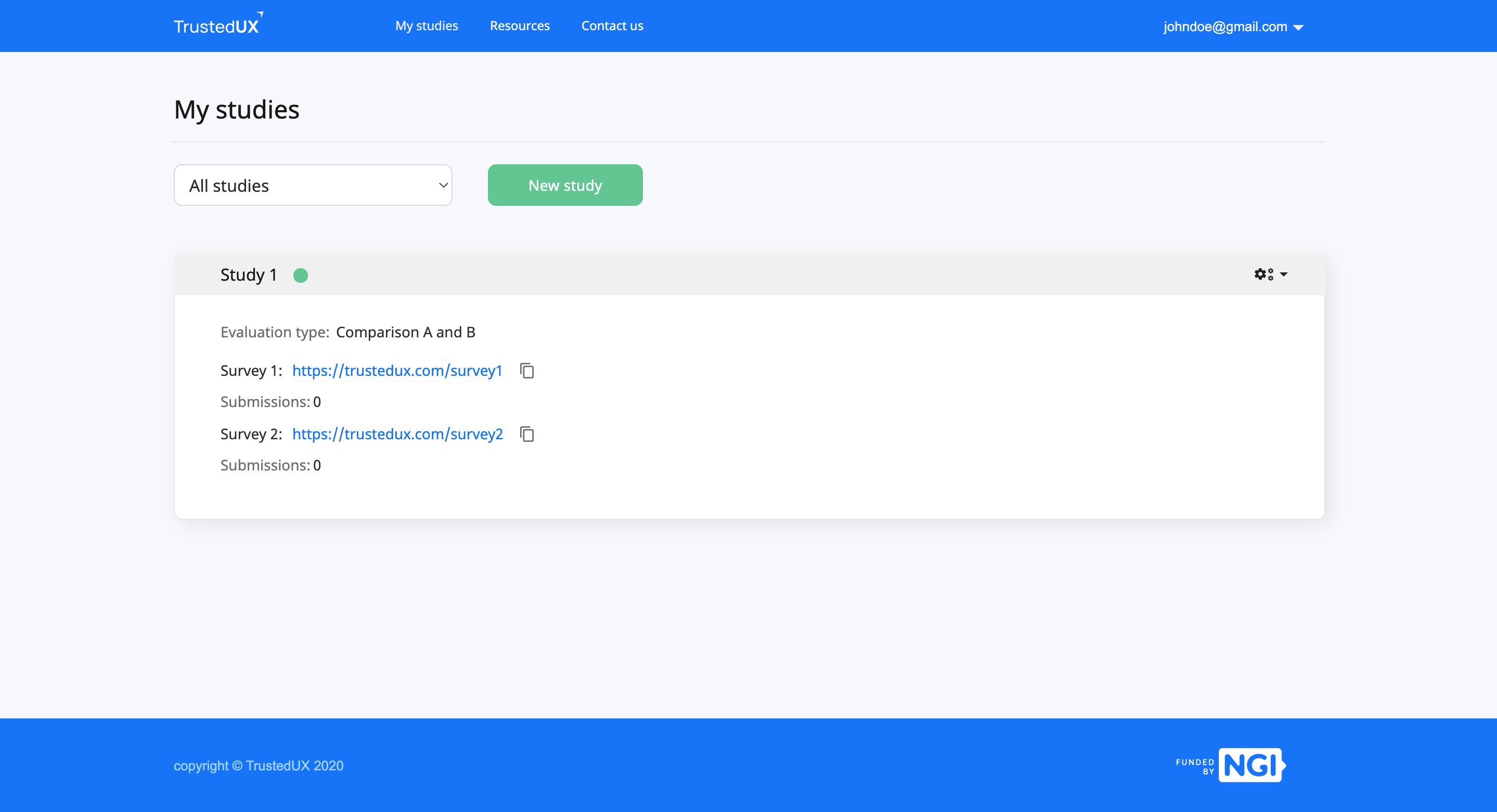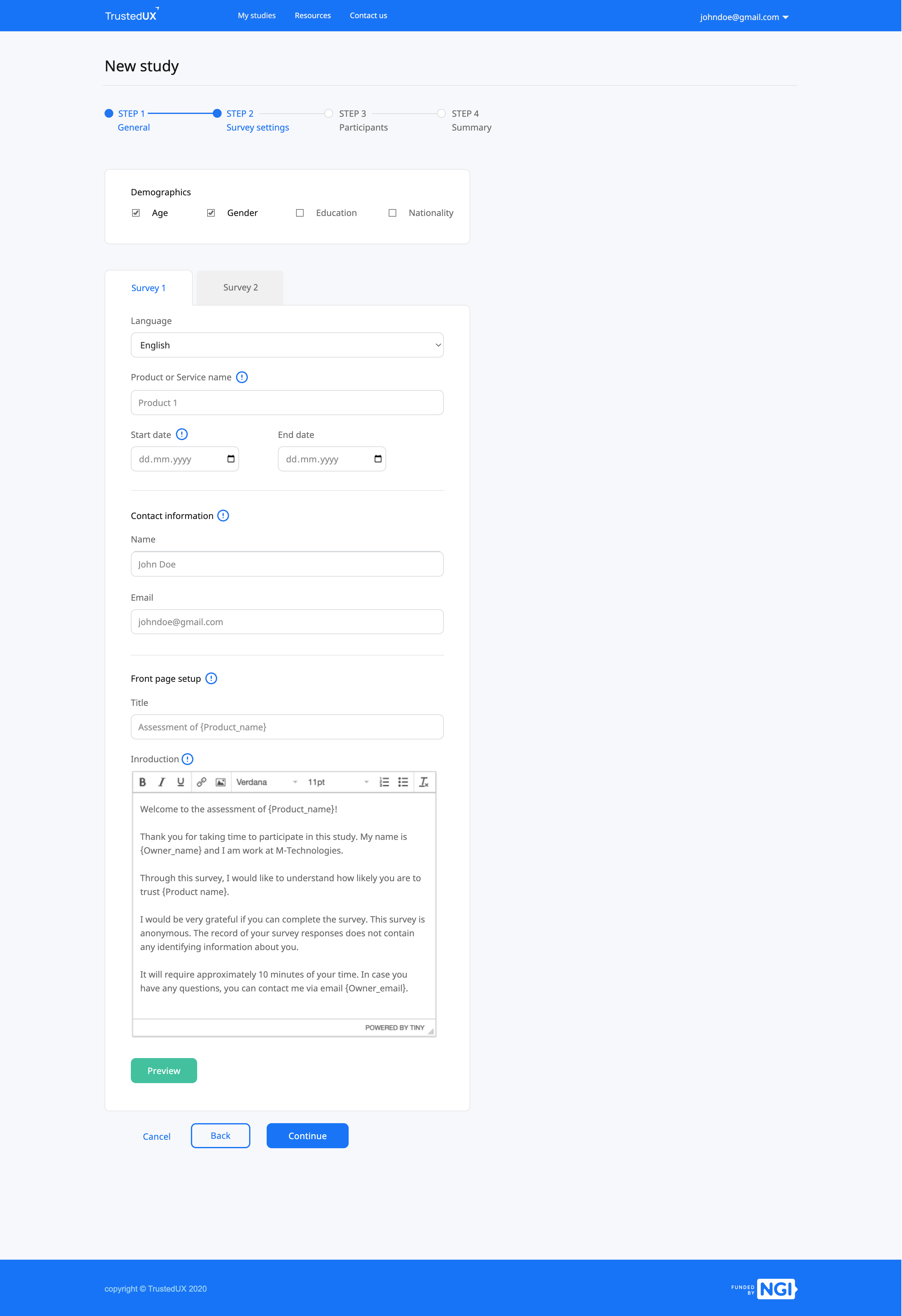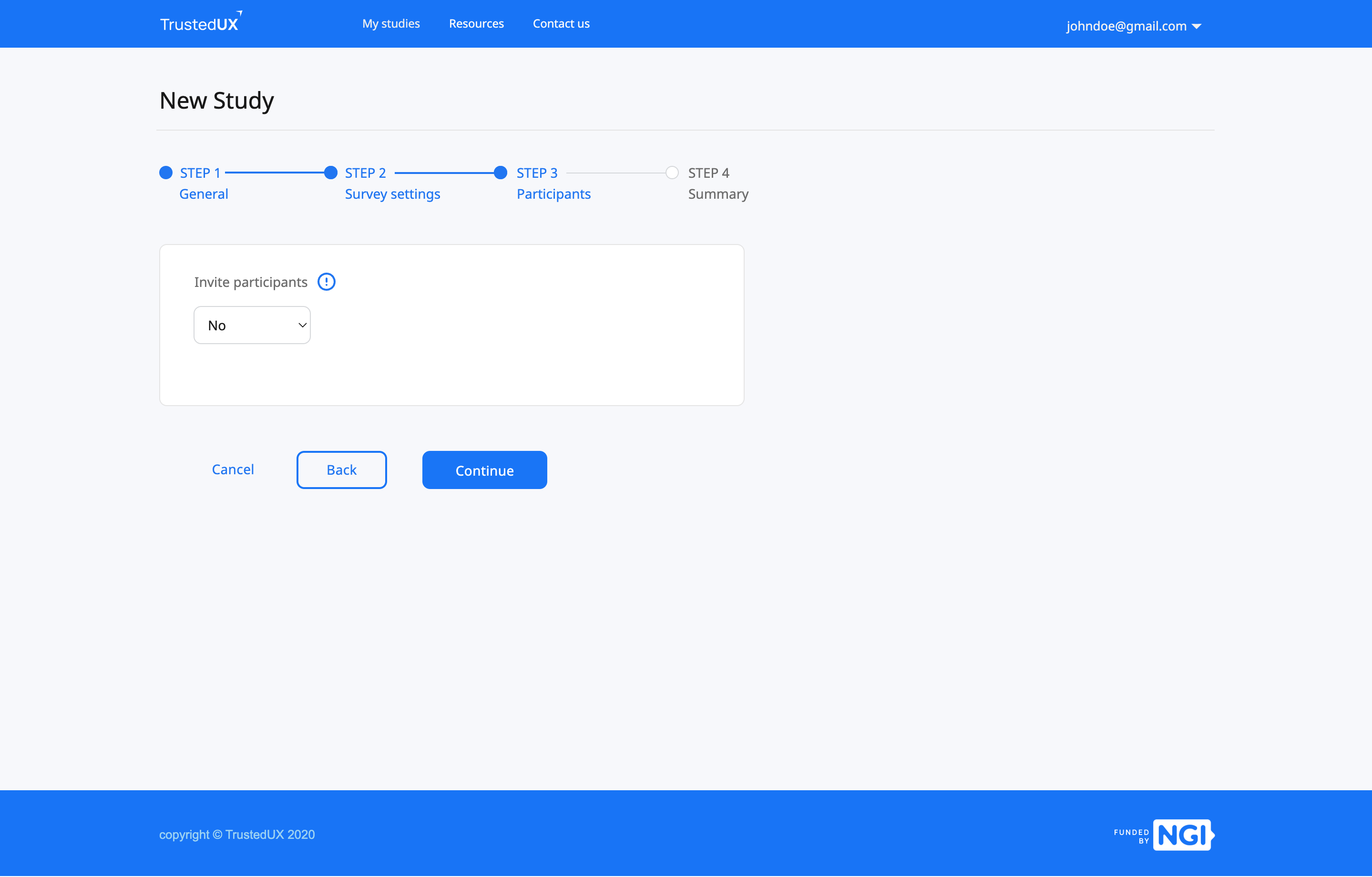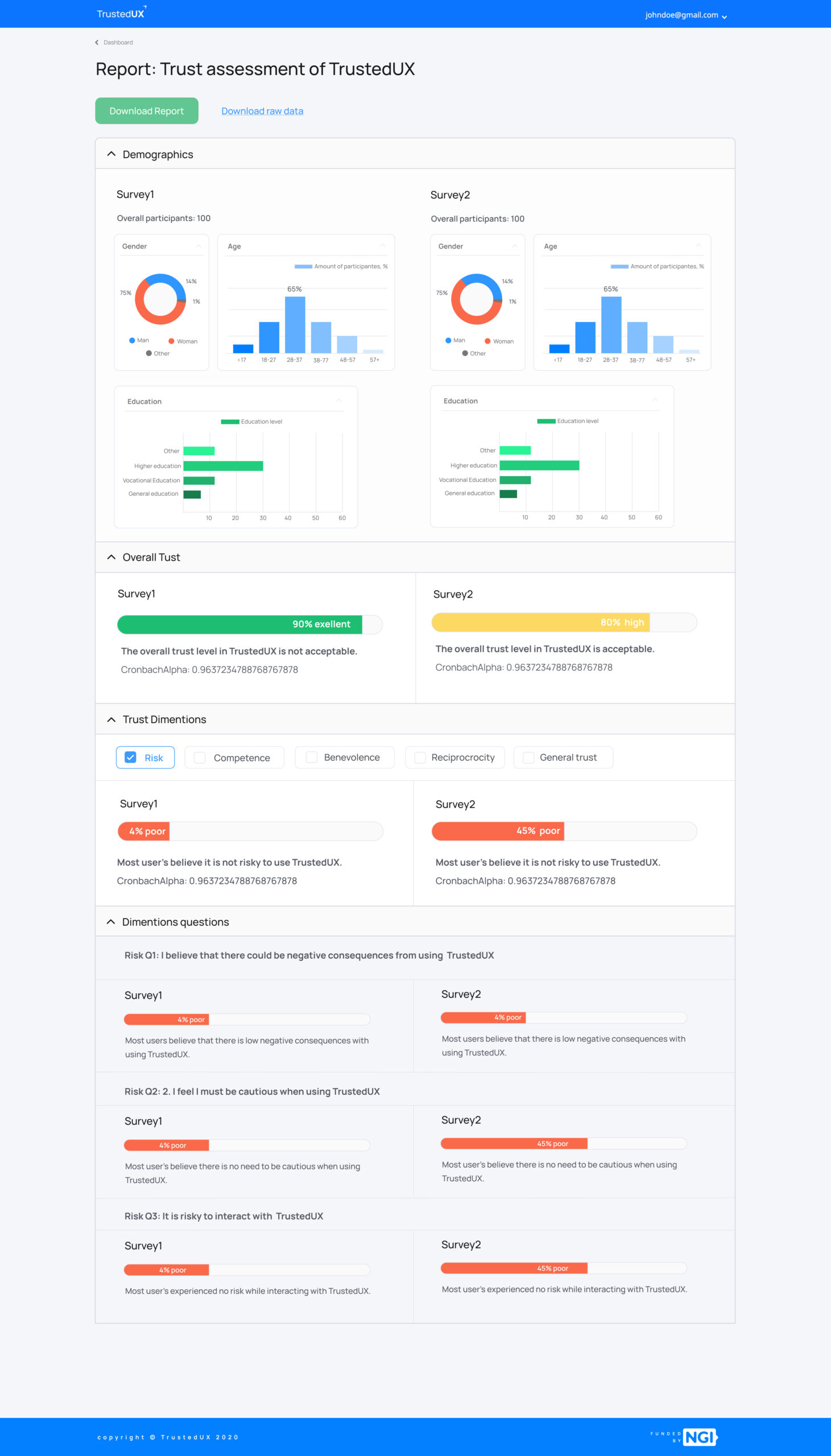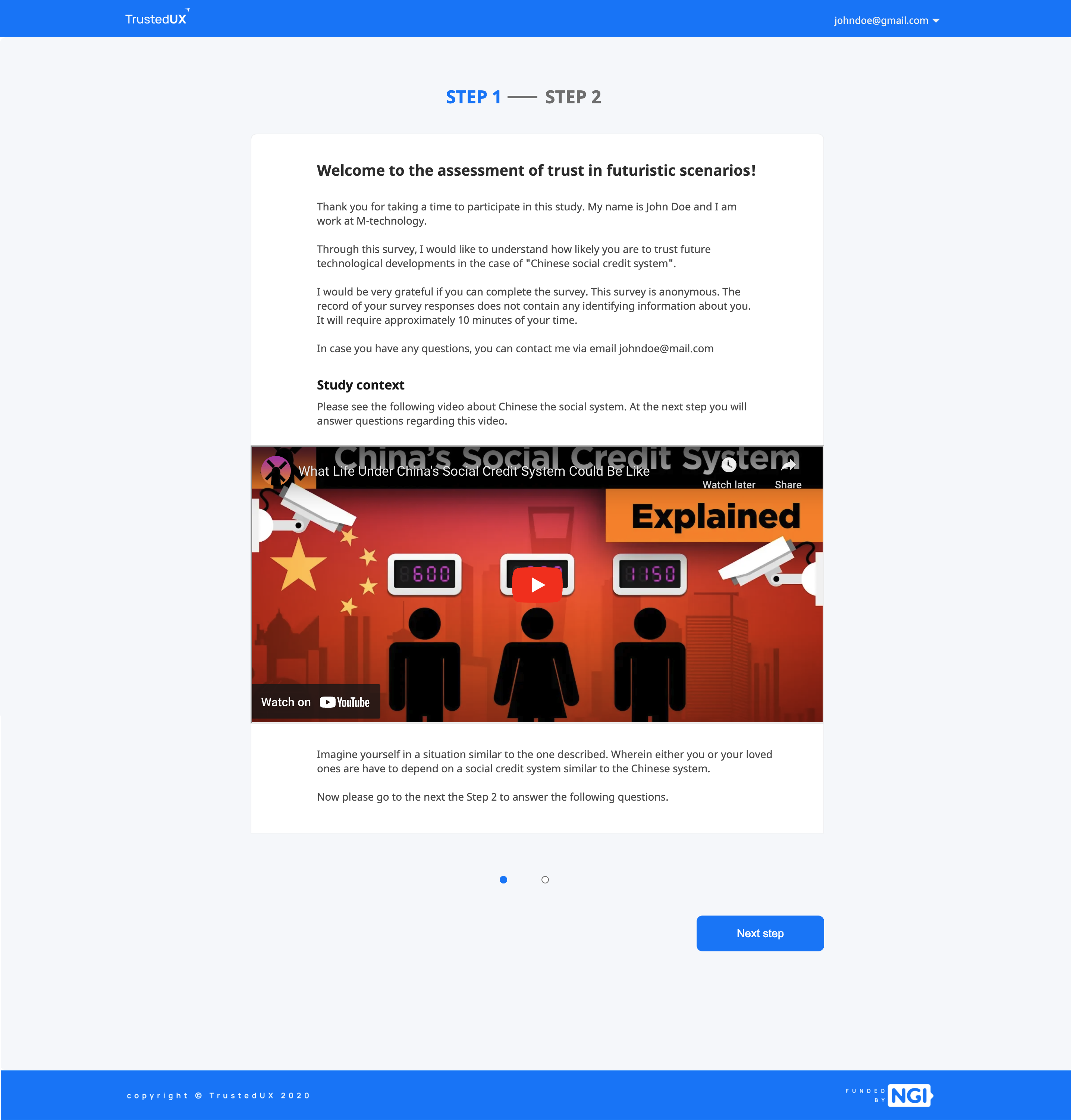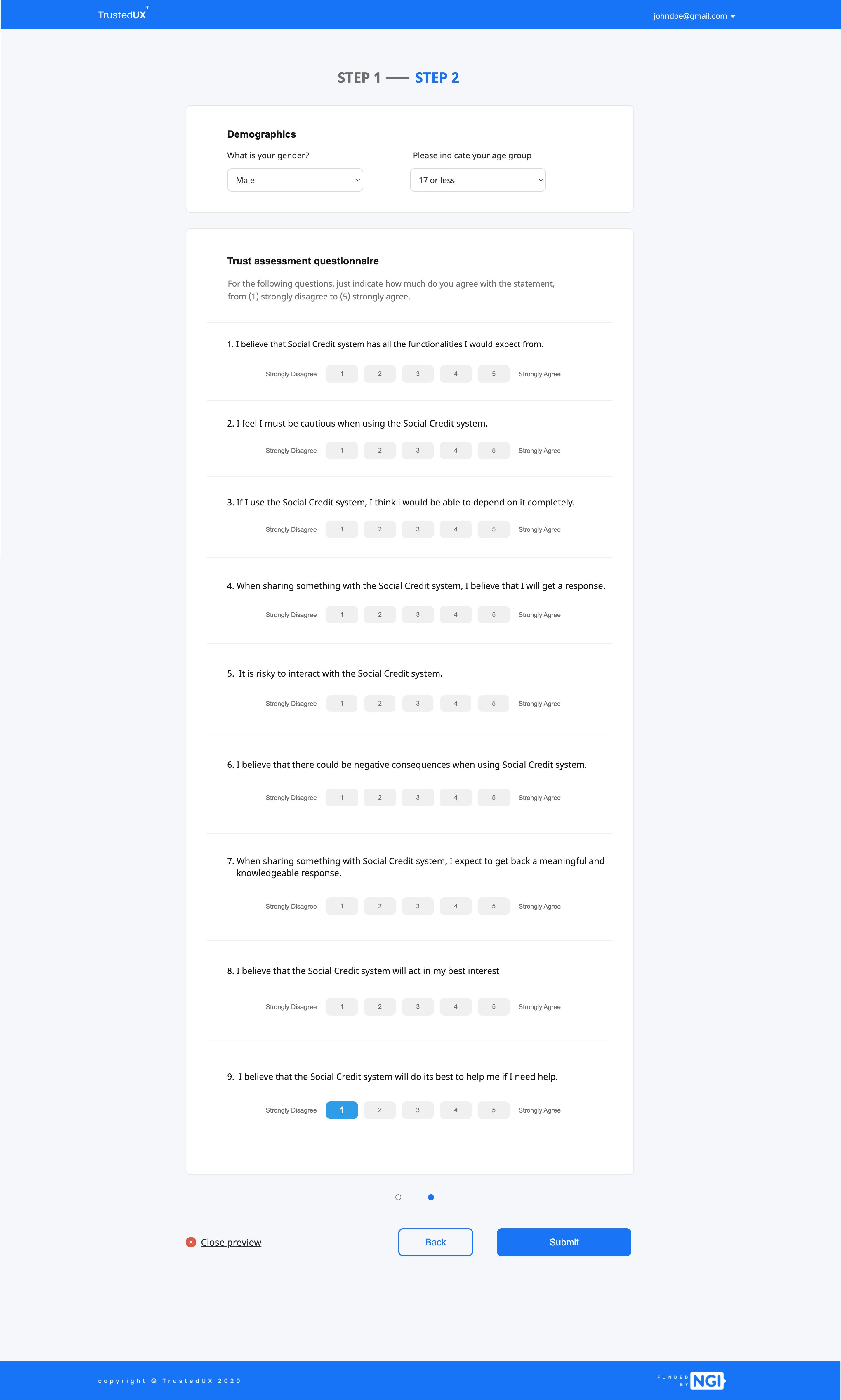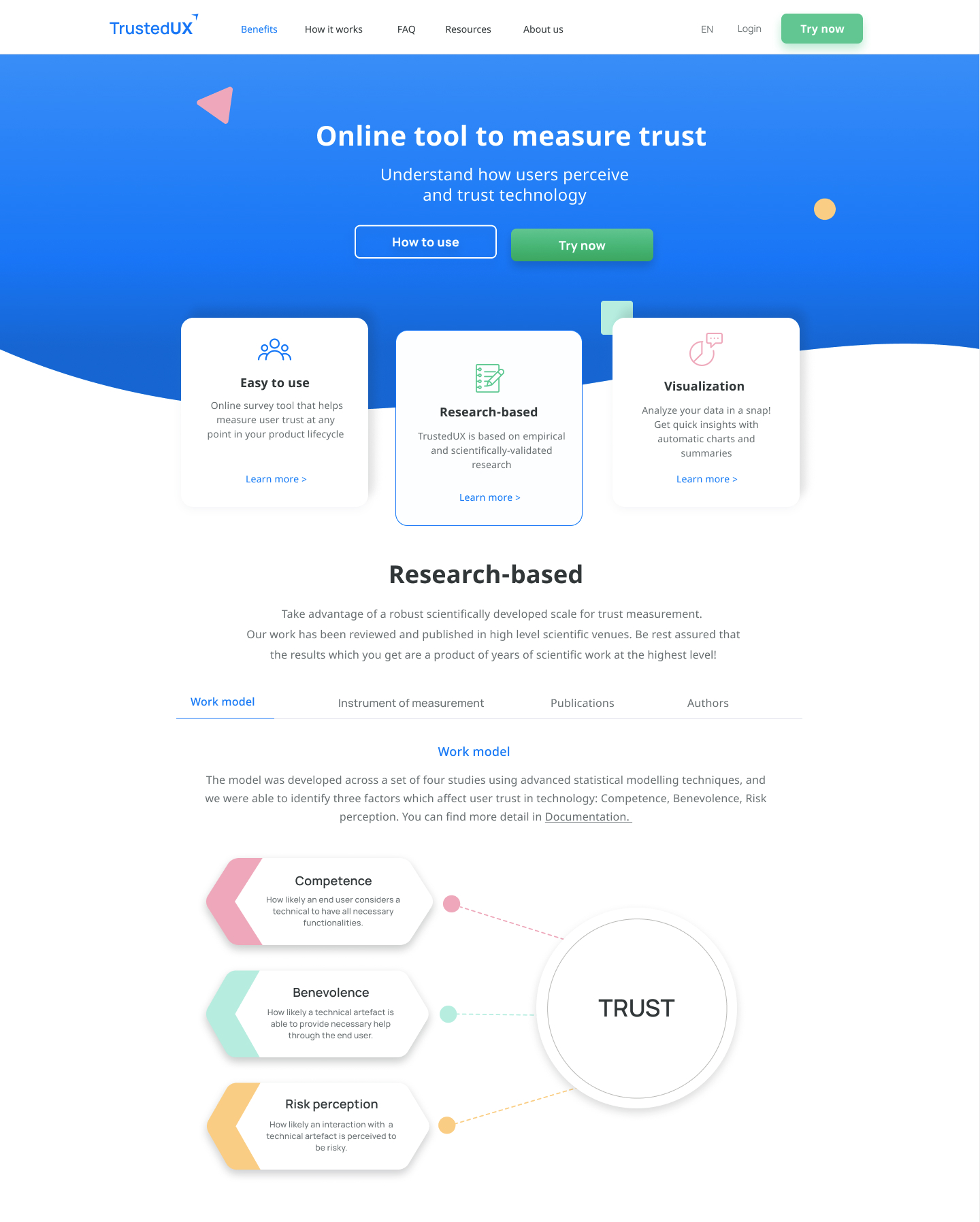TrustedUX: Digital tool to assess user perception of trust in technology
2021 • Role: Senior UX/UI Designer
Summary
As a Senior Product Designer, I took charge of the design and development process for a digital tool to assess users’ trust in technology. The team consisted of a UX researcher and two software engineers. My role involved prioritizing MVP features, redesigning the user flow, improving UX writing, and creating wireframes and interactive hi-fi prototypes using Figma and Axure. I also managed the team to ensure project goals were achieved within the set deadlines.
Team
- Head of the group
- Senior UX/UI designer
- UX Researcher
- Software Engeneers (2)
Project link:
Challenges
• Limited resources
The development of the functional prototype proceeded without any involvement from designers. In light of this, I joined the team to address design issues and improve the product’s overall design. Within a limited timeframe of three months, we were redesigning the MVP for a digital tool focused on evaluating user perception of trust in technology. Due to resource constraints, I assumed the roles of both project owner and product designer, juggling the responsibilities of overseeing the project’s progress and actively shaping the product’s design.
• Complexity
The project presented a high level of complexity. Being an innovative product, it had no direct competitors in the market. This uniqueness made it difficult to translate academic knowledge into practical industry application. We heavily relied on academic research to guide our approach, but bridging the gap between theory and industry proved to be a significant challenge.
Process
Task
To develop user-friendly digital tool (MVP) that enables researchers and design practitioners to run studies to assess users’ trust in digital technologies.
Problem
The primary problems encountered revolved around user flows and language style coherence. With limited resources and time constraints, it became crucial to identify and focus on the core functionalities that would provide the most value to users. This required careful decision-making and effective communication with the team to ensure our efforts were directed towards achieving the project’s primary goals and meeting the established timeline.


UX Research
I conducted UX research to understand issues with user flow in implemented functional prototype. The exercise was designed after an expert evaluation of the existing prototype. The card sorting exercise, conducted using Miro, was valuable in validating my hypotheses and gaining insights into the optimal user flow. This exercise confirmed the effectiveness of specific design elements and their sequence and aided in determining the appropriate labels for these elements. Six participants participated in an online study, providing valuable feedback and enabling a more user-centric approach to refine the user flow.
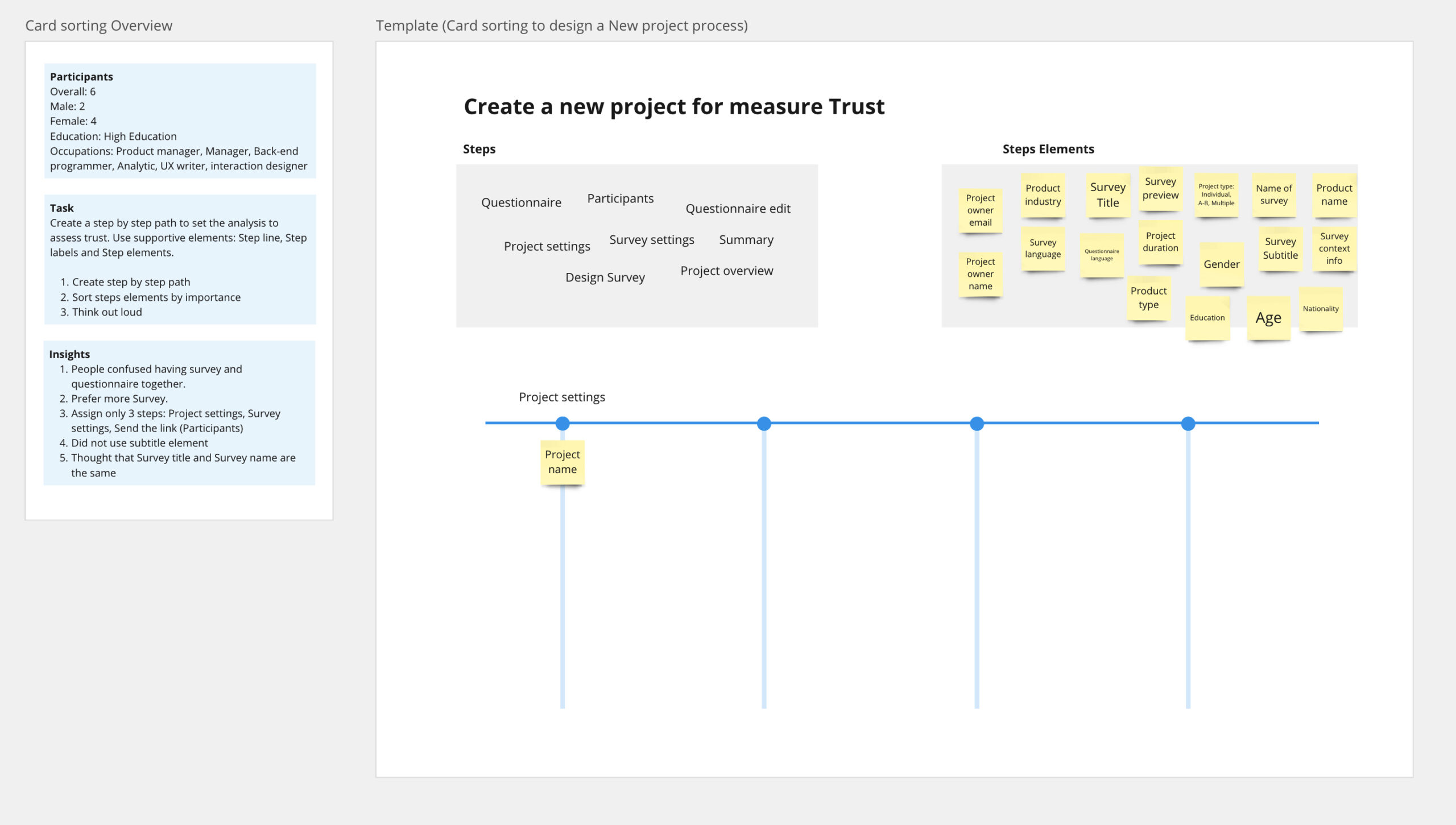

Research Impact
The research insights allowed me to solve two initial challenges understand the user flow and adjust some UX Writing.
Digital experience design
Low-fidelity prototyping
Based on Card study insights, I built a low-fidelity prototype using the Miro board to communicate results with a team and run hallway usability tests with colleagues researching trust in technology. As a task, we asked the user to set up a study to evaluate users’ trust perception in face recognition technology.
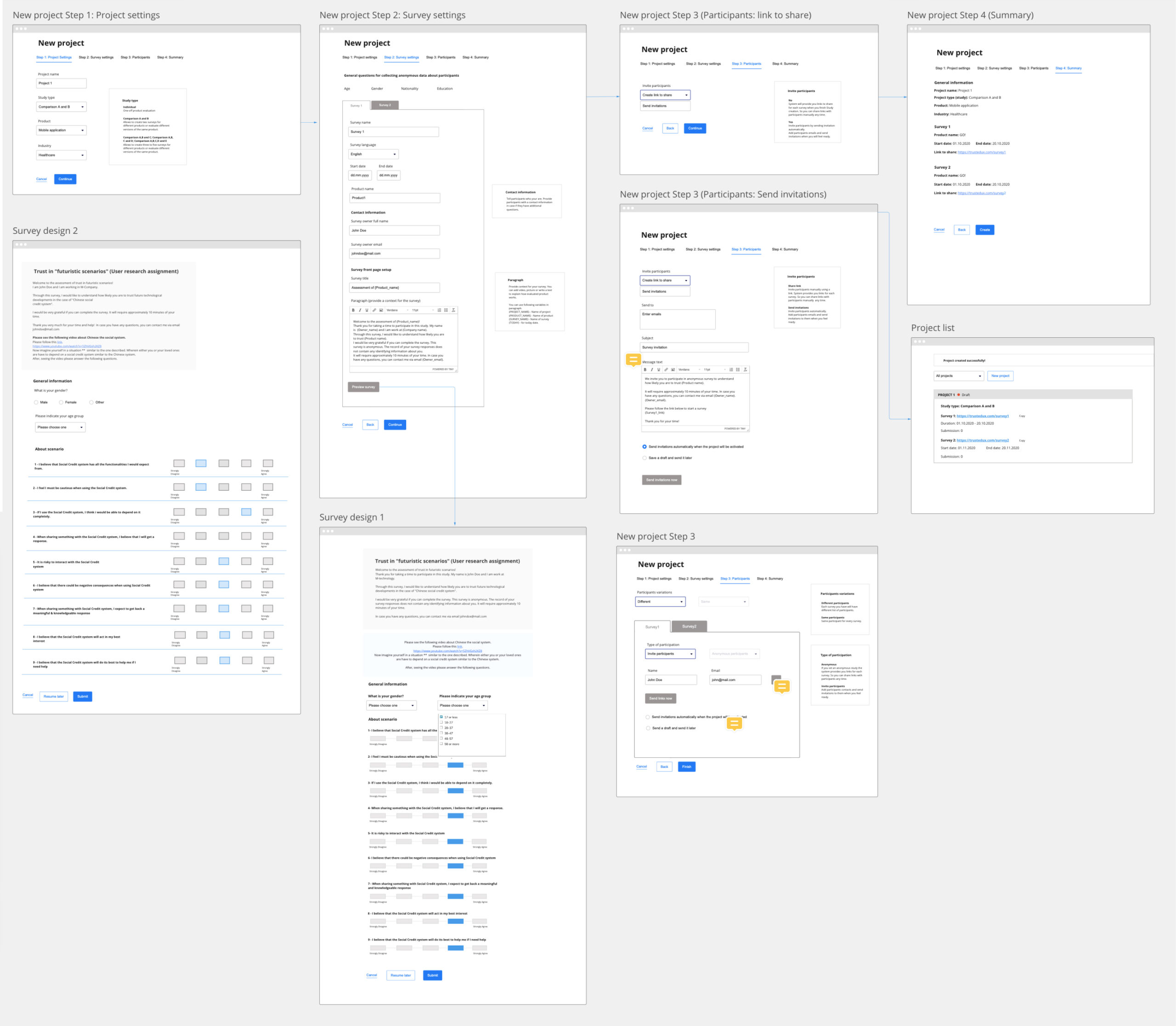
Hi-fidelity mockups and prototyping
The high-fidelity prototype was developed using Figma and Axure, incorporating feedback obtained from the hallway testing. The hi-fi prototype provided users with a near-realistic experience, allowing them to interact with different inputs within the interface. I conducted a tasked based usability testing with 5 participants to assess product usefulness to achieve users’ goals with the same task from the previous stage.

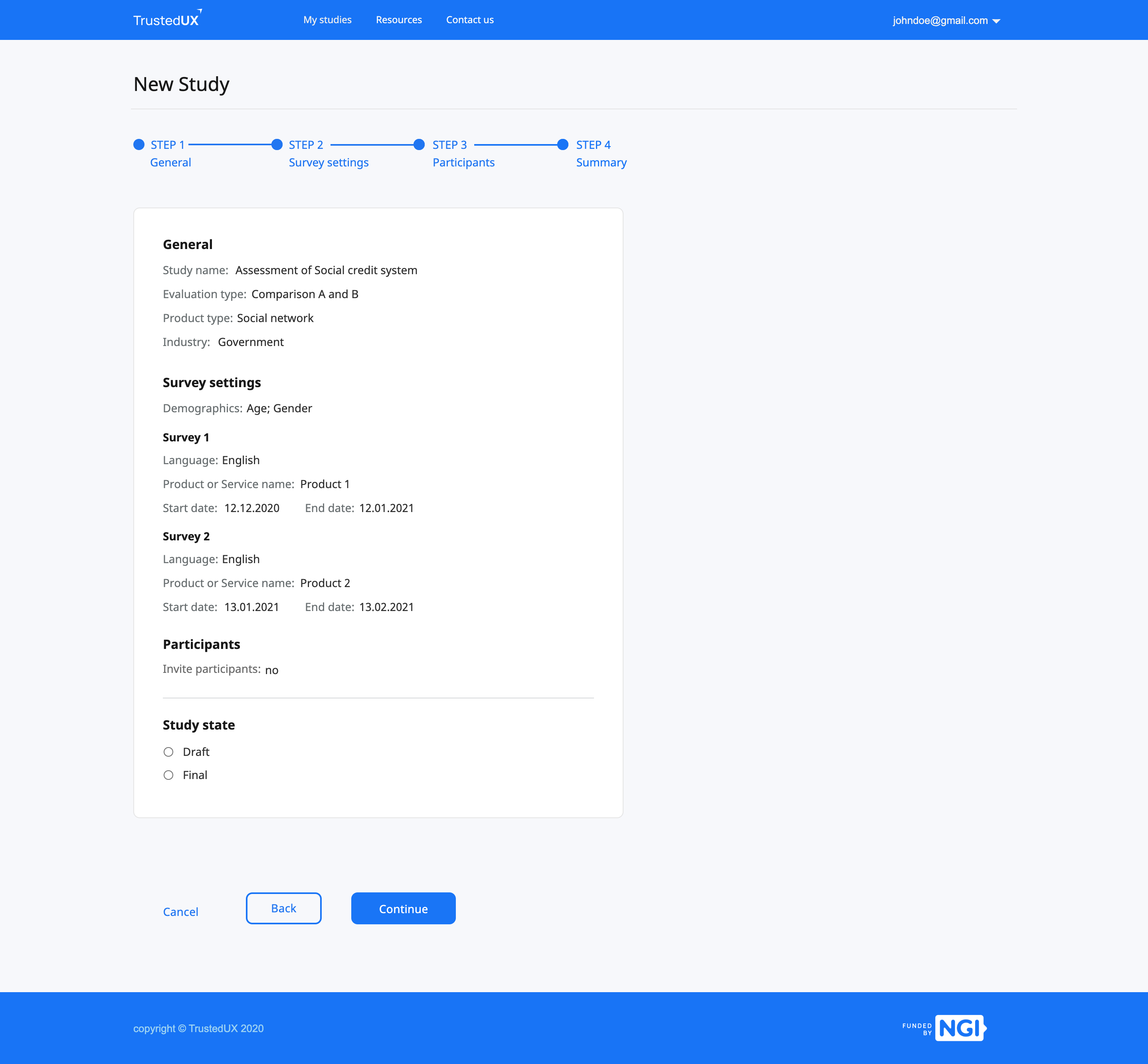
Impact
We launched the MPV of the product according to the deadline. Focusing on the main feature and eliminating user flow issues with rapid testing allowed us to gain the goal. Additionally, the product website and some promotional materials were designed: a promotion video and a how-to video.
Iuliia Paramonova
Tallinn • Estonia • (+372) 5848-12-81 • juparamonova@gmail.com
